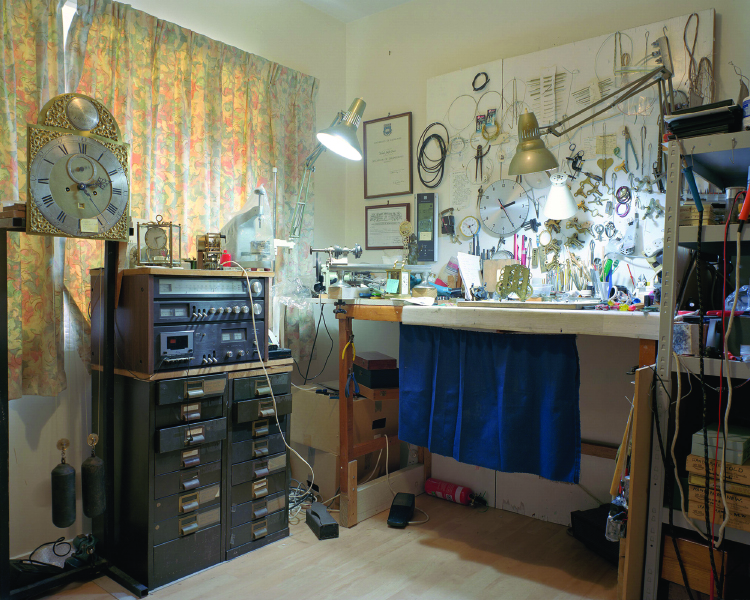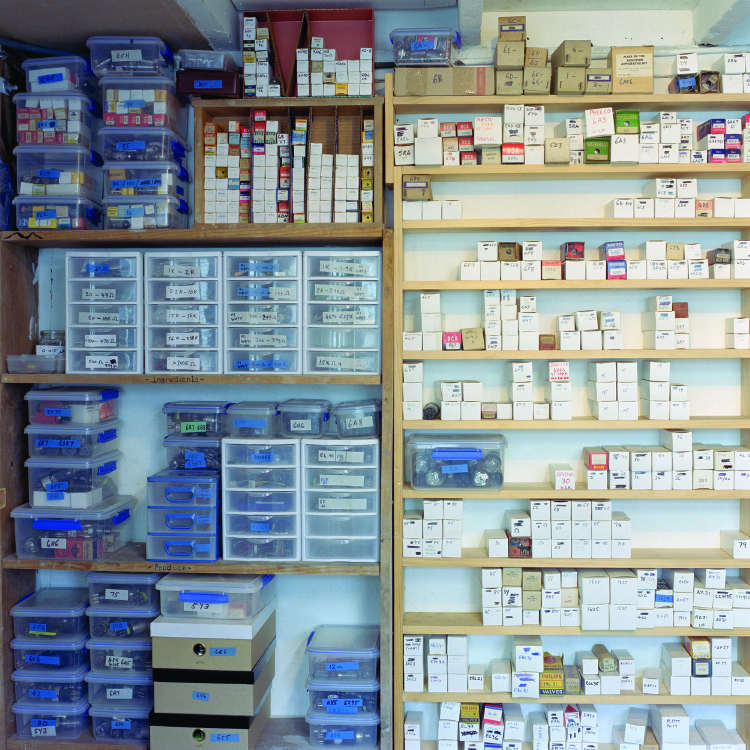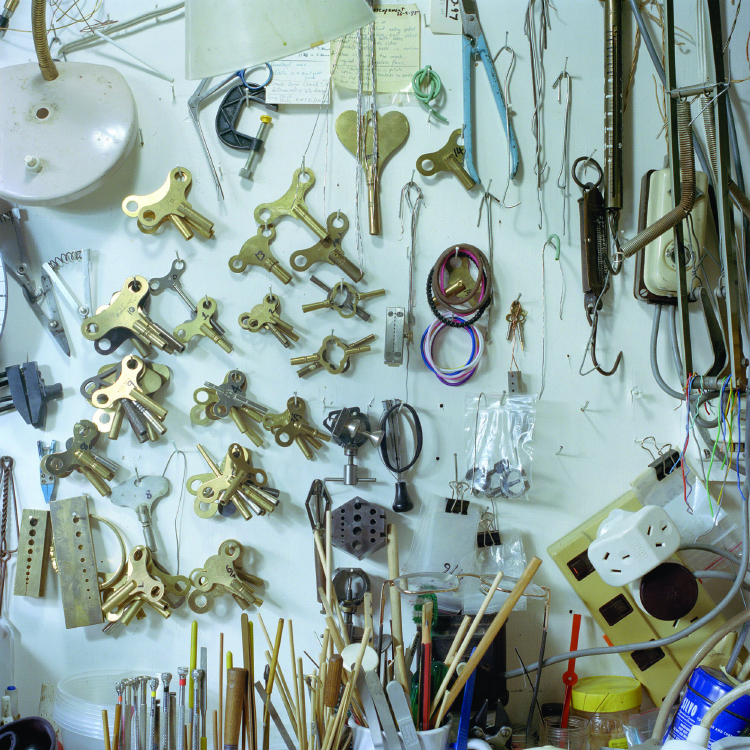The Weight of Stuff
Hamish McLaren’s Workshop Photographs
MALCOLM BURGESS

HAMISH McLAREN Untitled 5 2019 120mm negative, digital scan, inkjet print, 1030 x 1030 mm.
Is it possible to re-create a spirit from mere possessions? Hamish McLaren does not directly pose this question through his images of Auckland workshops, but it is unavoidable, the further down the rabbit hole one goes.
Sanctuary is a curious project — through the medium of large-format photography, the minutest details of discrete lives are brought to life, without actually showing those lives in question. Absent subjects are obliquely captured through their accretions, in a sort of slow-motion photography on the timescale of a human lifespan.
McLaren says the main idea behind the project is how these spaces can describe their owners in an intimate and personal way, without revealing them in the photographs. ‘I think the spaces represent the people that inhabit the spaces as well as these types of individuals in general, the types that tinker with things, fix things themselves, people who have ingenuity.’
Without resorting to anything so dubious as Kirlian photography, McLaren nevertheless engages in paranormal activity, a sort of ghostbuster, deploying his camera in a way reminiscent of that movie’s fabled ghost traps.
The first workroom certainly seems lived in. With its two grandfather clocks, square piano (c.1825), motorcycle and leather jacket, it is infused with the spirit of Back to the Future and perhaps even Amadeus. A particular marvel of this shot is in the packing - just how did anyone get so much stuff into such a small place, if not by breaking some serious laws of physics?
The lair of a clockmaker lays bare an array of mankind’s most torturous efforts to tease and probe Old Father Time. The detritus in this workroom is so orderly, one is reminded of those exploded diagrams of the internal workings of intricate machines, as epitomised by the photographs of Todd McLellan in his series, Things Come Apart 2.0.
The owner of another room is clearly highly attuned to patterns, to the exclusion of much else. Artfully placed towers of plastic containers and cardboard boxes rise precipitously, the attention to detail painfully palpable, though it is impossible to determine what it is that is being ordered.
In another, we find a lovingly restored Edison phonograph, and next to it, some wax cylinder records. This is without a doubt the most chilling of McLaren’s set-ups; who knows how many lost souls lie imprisoned within these nightmares on wax, awaiting the chance to release their warped, plaintive cry.
Floating above all these anonymous altars of focus, obsession, retreat, and forgetting, is one particular soul, of course. This is the photographer’s grandfather, who passed away in 2017, and whose workshop was the inspiration for McLaren’s Whitecliffe BFA graduation show, for which all these images were made.

HAMISH McLAREN Untitled 1 2019 120mm negative, digital scan, inkjet print, 1030 x 1280 mm.

HAMISH McLAREN Untitled 2 2019 120mm negative, digital scan, inkjet print, 1030 x 1280 mm.

HAMISH McLAREN Untitled 6 2019 120mm negative, digital scan, inkjet print, 1030 x 1030 mm.

HAMISH McLAREN Untitled 7 2019 120mm negative, digital scan, inkjet print, 1030 x 1030 mm.

HAMISH McLAREN Untitled 3 2019 120mm negative, digital scan, inkjet print, 1030 x 1030 mm.

HAMISH McLAREN Untitled 7 2019 120mm negative, digital scan, inkjet print, 1030 x 1030 mm.
